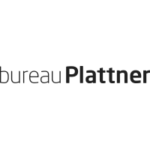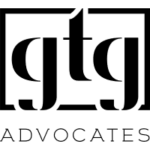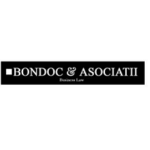-
What are the key rules/laws relevant to M&A and who are the key regulatory authorities?
For private M&A transactions, the key legal framework is the Peruvian Corporate Act (Ley General de Sociedades) and the Peruvian Civil Code.
For public M&A transaction, in addition to the previously mentioned laws, the Capital Markets Act (Ley de Mercado de Valores), the Tender Offer Regulation (Reglamento sobre Oferta Pública de Adquisición y de Compra de Valores por Exclusión) and other relevant rules and regulations issued by the Superintendence of Capital Markets (SMV in its Spanish acronym) are also applicable.
Public M&As are supervised by the SMV and the Lima Stock Exchange, whereas Private M&A are not subject to supervision by any governmental agency. However, certain companies that hold specific assets or permits might require clearance from another governmental agency.
Merger control procedure, governed by the Merger Control Act (Ley de Control Previo de Concentraciones Empresariales), is overseen by the Peruvian competition agency (INDECOPI in its Spanish acronym), and notification from parties is applicable when:
- A change of control occurs due to (a) mergers and consolidations; (b) acquisition of shares and relevant operative assets (tangible and intangible, e.g. accounts receivable, financial assets, etc.); and (c) joint ventures (incorporated or unincorporated) and other partnership agreements (including public private partnerships) and
- The following thresholds are achieved:
(a) the combined sales or book value of assets from the most recent tax period for all parties involved in the transaction is, jointly, equal or higher than approximately US$164.2 million and
(b) the turnovers or book value of assets from the most recent tax period for at least two of the parties involved in the transaction is, individually, equal or higher than approximately US$25 million each.
Additionally, pursuant the Regulation of the Merger Control Act:
- There is ex officio procedure if INDECOPI considers a transaction, that although did not surpass the thresholds, may cause anticompetitive effects in the Peruvian market. INDECOPI will have a 12-month period since the transaction is closed to assess it and consider if it requires clearance. INDECOPI may (i) approve the transaction, (ii) disapprove it, or (iii) order the parties to execute remedies. However, the parties may begin a voluntary procedure to receive clearance from INDECOPI. Under this scenario, the parties will have to obtain clearance from INDECOPI to close the transaction.
- A fast-track procedure is applicable when (i) the parties and their economic groups do not perform commercial activities in the same market as the target company or asset’s market (either market of the product or service or geographical market) in Peru or when it does not participate in any stage of the production or supply chain in Peru, first landing; or, (ii) a transaction where the buyer passes from joint control to exclusive control.
- INDECOPI may review Public-Private Partnerships (PPP) agreement during any stage of the procurement.
One of the main issues being discussed is when an international buyer acquires control of a Peruvian company to enter the Peruvian market for the first time, also known as “first landing.” At first glance, such transactions may not require clearance from INDECOPI, as the international buyer may not meet the aforementioned thresholds due to their inactivity in the Peruvian territory in the prior fiscal year of the M&A transaction. However, it is advisable to conduct an antitrust analysis to determine if the buyer -or any other company in their economic group- has sold goods or provided services to a Peruvian individual or entity, even if executed through a Peruvian intermediary. It is also important to review if they own tangible or intangible assets in Peruvian territory and if they hold shares or equity securities in a Peruvian company as a minority shareholder, investor, or financial partner. In summary, first landing, in and of itself, is not exempt from antitrust clearance regulations. Therefore, it is recommended to conduct an in-depth analysis to confirm whether or not the M&A transaction with an international buyer requires clearance from INDECOPI.
Additionally, it shall be considered that under Article Two of Resolution of the Superintendency of Banking and Insurance No. 00511-2023, operations covered by this law and its regulations, involving entities supervised by the Superintendency (banks, credit companies, among others), require approval based on procedures outlined by this authority. For financial institutions that takes deposits or insurance firms, the Superintendency has a 20-business-day window to ascertain if the operation meets specified criteria. If it doesn’t, the Superintendency shall advise companies to consider seeking approval from INDECOPI. If the operation doesn’t require Superintendency approval, different provisions shall come into play. Furthermore, within 5-business-days of notifying companies, the Superintendency must provide INDECOPI with copies of its communications or resolutions, as per the stipulations of Article 21 of the Regulation.
-
What is the current state of the market?
According to TTR, there were 176 M&A transactions in 2024, reflecting a 17.3% increase compared to 2023.
Private equity investment funds have been key drivers of the M&A market, with notable activity particularly in power generation, metals and minerals, and oil and gas sectors. Additionally, venture capital deals and asset acquisitions were also performed throughout 2024.
Among the international players, US remains as the top foreign investor in Peruvian M&A, followed by Chile, Canada, Switzerland and Spain.
-
Which market sectors have been particularly active recently?
Throughout 2024, recent M&A activity was active in sectors such as power generation, renewable energy, industry-specific software, banking and investment, metal and mineral resources, transport and logistics, oil and gas, food, business and professional support, among others.
-
What do you believe will be the three most significant factors influencing M&A activity over the next 2 years?
M&A activity is set to pick up pace in the first half of 2025, driven largely by the completion of long-running negotiations that began in 2023 and 2024. These extended discussions, often shaped by complex strategic goals, regulatory approvals, and market conditions, are now entering their final stages. Some of these transactions may continue into 2026.
As we move into 2025, economic and political stability will be crucial for businesses looking to consolidate and diversify strategically, especially in response to evolving market dynamics and new opportunities. This will not only influence the M&A landscape but will also help foster a more competitive and resilient business environment.
Certain sectors, such as energy (with a strong focus on renewable energy), mining, and infrastructure, are expected to draw substantial investment in the coming years. As the global shift towards cleaner energy and sustainable practices continues, we can expect a notable increase in M&A activity within the renewable energy sector.
-
What are the key means of effecting the acquisition of a publicly traded company?
If a person or group of persons will, directly or indirectly, take control of publicly traded company (control being considered if such person(s) acquires an interest over shares with voting rights or any other equity instrument above 25%, 50% or 60% of the total voting shares in the company; or enters into a contract which grants such person to obtain a controlling stake or appoint the majority of members of the board of directors), then the acquisition will trigger the obligation to launch a mandatory tender offer (Oferta Pública de Adquisición – OPA).
The mandatory tender offer is a protection that enables minority shareholders to be included in a change of control transaction.
In that regard, in the first scenario, if the person will acquire (i) an interest below the abovementioned thresholds; (ii) any other equity instrument which are not shares with voting rights or any other instrument or contract that could give such person control of the publicly traded company, then the acquisition will be performed in the stock market through a stock trader.
In the second scenario, the purchaser may also enter into an agreement with the controlling shareholder to acquire its shares directly. Once the shares of the controlling shareholders are acquired by the purchaser, the purchaser must launch a mandatory offer (OPA Posterior) to the remaining shareholders for a number of shares resulting from a formula set in the Tender Offer Regulation.
With respect to the price of the tender offer, the price would be the one set by the purchaser except for the second scenario of the subsequent tender offer, where the price per share must be equivalent to the price set by an independent appraisal entity, following the pricing methodologies set in the Tender Offer Regulation (which include, Comparables Approach, Discounted Cash Flow, Precedent Transactions, among others).
-
What information relating to a target company is publicly available and to what extent is a target company obliged to disclose diligence related information to a potential acquirer?
The Companies’ Registry and other governmental agencies may provide general information on a target company (i.e. certain representatives, registered capital stock, litigation, real estate property, etc.). However, that information may not be necessarily updated or complete, so it is customary for the purchaser only to request and pay for information which has not been delivered by its counterparty during the due diligence process or would want to have certainty of the information received.
Information that only the target company may disclose as it is consider private information under Peruvian law is:
- Identity of the shareholders and their current equity interest (unless it is a public company)
- Financial statements (unless it is a public company)
- Arbitration procedures
- Private contracts (e.g. financial agreements and debt instruments, service agreements, joint ventures, employment contracts, etc.)
- Tax returns and tax investigations by the Peruvian tax authorities.
- Administrative sanctions
- Some licenses and permits issued by the Peruvian local municipalities authorizing the use of property for business purposes.
Notwithstanding the above, the following information from public companies is publicly disclosed:
- Identity of the shareholders and their current equity interest if they hold, at least, 5% of the total capital stock of the target company
- Financial statements, including annual, quarterly and mid-term financial statements
- Relevant information disclosed by the target company in accordance with Relevant Matters and Reserved Information Regulation.
- Dividends policy
- Corporate governance policy.
- Economic group information.
- Financial information.
- Sanctions imposed by the SMV.
The sellers or the target company cannot be obliged to disclose all their information but the purchaser, during the due diligence stage and the negotiation of the share purchase agreement, may include detailed representations regarding the target company, sand-bagging provisions, among others.
-
To what level of detail is due diligence customarily undertaken?
Due Diligence is performed customarily in all M&A transactions. However, the depth of such Due Diligence will depend on the purchaser needs. Anyway, our advice is to always perform an in-depth Due Diligence. Executive Due Diligence is regularly composed of (i) corporate law; (ii) tax law; (iii) labor law and employment; (iv) contracts; (v) finance, and (vi) main regulatory matters. A complete Due Diligence is composed by all legal practice areas, including the regulatory applicable legal framework, depending on the target company industry sector.
-
What are the key decision-making bodies within a target company and what approval rights do shareholders have?
Although the sellers may decide on their own to sell their shares, customarily a Shareholders’ Meeting approved the transaction through a resolution. Particularly, if the shareholders have pre-emptive rights over the transferred shares. In the resolution, the shareholders will waive their pre-emptive rights in favor of the purchaser.
In the case of public companies, the Tender Offer Regulation requires the Board of Directors to issue an opinion in connection with the advantages and disadvantages of the tender offer within 7 days following its day of launch. This opinion has no binding effects.
-
What are the duties of the directors and controlling shareholders of a target company?
- Act within their Powers
- Act on the benefit and the best interest of the company
- Exercise independent judgment
- Exercise reasonable care, skill and diligence
- Avoid conflict of interest
- Duty of loyalty
- Duty of care
Controlling shareholders must respect the minority shareholders rights and act within the scope of the Peruvian law.
-
Do employees/other stakeholders have any specific approval, consultation or other rights?
Employees or other stakeholders would only have specific approval, consultation or any other right if there is a written contract with the Target Company with a change of control provision (which, for the case of employees, is very an uncommon provision to have). However, in case of breach of this provision, the consequences are that the contract is terminated (in the case of financing agreements, the corresponding facility can be accelerated and any collateral securing the contract can be foreclosed) by default and the Target Company must indemnify the other party. Customarily, the Target Company give notice to such parties (especially to financial entities) and generally they waive their rights to the change of control provision or conditioned it to certain matters prior to grant such waiver.
-
To what degree is conditionality an accepted market feature on acquisitions?
Conditionality is generally accepted if the sellers must perform an act prior to closing (e.g. cancel an encumbrance over relevant assets or amend any internal procedure in the Target Company). Currently, it is a contractual matter agreed by the parties. Additionally, if the Merger Control Act is applicable, the transaction will be conditioned to the approval by INDECOPI before closing.
In the specific case of public companies, moreover, addressing specifically tender offers- Tender Offer Regulation allows that a tender offer is conditioned to certain terms and conditions (e.g. a minimum floor of shares is acquired through the tender offer).
-
What steps can an acquirer of a target company take to secure deal exclusivity?
In a non-competitive process, it is customary that the acquirer requests a deal exclusivity provision to the sellers of the Target Company in the non-binding offer letter and the sellers and/or the sellers of the Target Company grant such exclusivity. The deal exclusivity is commonly granted between 60 and 90 days, but it can be renewed for an additional period, prior negotiation between the parties.
-
What other deal protection and costs coverage mechanisms are most frequently used by acquirers?
Once exclusivity is secured, it is common to obtain break-up fees in case one of the parties opts out of the transaction without reasonable cause.
Also, in the Share Purchase Agreement (SPA), acquirers most frequently deal protection and cost coverage mechanisms are escrow accounts, confidentiality, non-compete, non-solicitation, arbitration and indemnification clauses.
-
Which forms of consideration are most commonly used?
Cash consideration is the most commonly used. But other forms of considerations such as share exchange or asset consideration have been used in M&A transactions in Peru.
In the case of mining deals, it is common for part of the consideration to be paid with mining royalties obtained from the revenues of the sale of extracted minerals by the target company after closing. This royalty typically ranges between 1% to 3% of the revenues and is paid to the seller on a regular basis, usually monthly or quarterly. The SPA must include a valuation method to calculate the mining royalties to be paid in order to cover the outstanding amount of the purchase price of the shares. This valuation can be based on various factors such as the expected lifespan of the mine project, the quality and quantity of the mineral deposits, and the current market price of the extracted mineral. Generally, the value of a mining royalty can be estimated by projecting the future revenue stream from the mine and discounting it back to its present value using an appropriate discount rate.
-
At what ownership levels by an acquirer is public disclosure required (whether acquiring a target company as a whole or a minority stake)?
For private companies, there is no mandatory obligation to publicly disclosed ownership levels. For public companies, all information regarding the shareholders that hold at least 5% of the capital stock of the target company is public. Disclosure obligations reach the ultimate beneficial owner.
-
At what stage of negotiation is public disclosure required or customary?
For private M&A transactions, it will only be publicly disclosed if the parties agree to disclose it and once the transaction is closed or when the SPA is executed (if the signing date and the closing date are deferred). In transaction that may bring media attention, parties may decide only to partially disclose the M&A transaction.
For public M&A transactions, the negotiation must be reported to the SMV but it can be reported as a reserved matter and the SMV will not publicly disclose the negotiation. Once the binding offer is accepted by the shareholders, the transaction becomes publicly disclosed.
-
Is there any maximum time period for negotiations or due diligence?
No. The maximum time period is negotiated between the parties. Regularly it will be the same time as the exclusivity period mentioned in section 12 above. Parties may continue to negotiate once the exclusivity period terminates but it will be under the purchaser’s risk.
-
Is there any maximum time period between announcement of a transaction and completion of a transaction?
For private M&A transactions, the are no maximum time periods between the announcement of a transaction and its completion.
For public M&A transactions, the Tender Offer Regulation states that in the case of a prior takeover (OPA Previa), there is no maximum time for completion, as is determined by the seller. However, the offer period cannot be shorter than 20 days.
For a posteriori takeover (OPA Posterior), the offer must remain open for at least 20 days and no more than 40 days. If there are competing offers, they must be submitted within 10 days from the start of the OPA period. The acceptance period for the offer is set by the seller, but it must be at least 15 days and cannot exceed 25 days.
-
Are there any circumstances where a minimum price may be set for the shares in a target company?
No, parties are free to set the shares’ price. But it must be considered that the Peruvian tax authority may object and may start an inspection if the share price is below market value.
However, only in the case of a posteriori takeover bids, the minimum price to be offered for the listed securities has to be determined by a valuation entity and must be formulated within 6 months from the date on which the tender offer is launched or within 5 days from the issuance of the valuation report, whichever occurs first. Likewise, in this scenario, the tender offer must be performed in accordance with the formula set forth in Annex 1 of the Tender Offer Regulation.
-
Is it possible for target companies to provide financial assistance?
No. According to the Peruvian Corporations Act financial assistance by the Target Company is prohibited, including granting security interests by the Target Company to the buyer or any of its affiliates. Private equity transactions have been performed in Peru by using complex corporate and tax structures that will not be categorised as financial assistance.
-
Which governing law is customarily used on acquisitions?
Peruvian law is the customarily used on acquisitions in Peru. However, foreign law may be used in some transaction where foreign parties are involved, but the parties must consider that in case of conflict of law, Peruvian law will prevail.
New York law is the customarily used in Peru for acquisition at an international level.
-
What public-facing documentation must a buyer produce in connection with the acquisition of a listed company?
- The prospectus.
- The notice to be publish by the SMV, the Lima Stock Exchange, in the Peruvian Gazzette and in a newspaper.
- The corporate authorisations.
- The offeror’s guarantee equivalent to the total consideration.
-
What formalities are required in order to document a transfer of shares, including any local transfer taxes or duties?
For private M&A transactions, parties must enter into a share purchase agreement (SPA) to document the transfer of shares. The Target Company will register such transfer in the Shares’ Ledger (which is held under custody by the Company’s CEO). There are no share transfer taxes or stamp duty, but the sellers will have to declare such transfer in their tax return filed to the Peruvian tax authority – SUNAT. The tax rate will depend if the sellers are individuals or corporations and if the transfer is conducted through the Lima Stock Exchange or not.
For public M&A transaction, documentation will depend if the takeover is (i) a prior (OPA previa); or, (ii) posteriori (OPA posterior). Notwithstanding, the prospectus and the offeror’s guarantee are essential documentation in both type of public takeovers. There is no share transfer tax or stamp duty in public takeovers. Shares are registered electronic by an agency named CAVALI (Central Register for Securities and Settlements in the Peruvian market).
-
Are hostile acquisitions a common feature?
No. There have been very few hostile acquisitions in the last 20 years. However, there has been hostile acquisitions in foreign jurisdictions which have affected directly in their Peruvian subsidiaries.
-
What protections do directors of a target company have against a hostile approach?
As hostile takeovers are not common, there has been little or no experience on protective measures. However, certain bylaws and directors’ agreements contain provisions such as poison pills or “sale of crown jewels” that can be activated upon a hostile takeover.
Additionally, directors and executive officers may have golden parachute clauses in their employment agreements that entitle them to severance payments if they are terminated from their positions due to a change in control of the company. Under Peruvian law, there are no specific regulations or guidelines from competent governmental agencies regarding the inclusion of golden parachute clauses in Peru. However, Peruvian Labor Courts have recognised golden parachute clauses in employment agreements, including those between companies and executives.
-
Are there circumstances where a buyer may have to make a mandatory or compulsory offer for a target company?
In public M&A transactions, the buyer will be obliged to make an offer to the minority shareholders in an OPA posterior. In this case, the buyer and the majority shareholders may enter into an agreement out-of-the-counter. Once the shares from the majority shareholders are acquired, the buyer has 6 months to make an offer to the minority shareholders. The valuation of the minority shareholders’ shares will be performed by an appraiser appointed by the SMV and the number of shares to be acquired by the buyer are calculated by a formula set in the Tender Offer Regulation.
-
If an acquirer does not obtain full control of a target company, what rights do minority shareholders enjoy?
Minority shareholders have the right to: (i) attend Shareholders’ Meetings and vote; (ii) receive payment of dividends; (iii) the shareholders holding at least 20% of the voting shares may request to convene a Shareholders’ Meeting. In the case of publicly-traded companies (Sociedad Anónima Abierta – S.A.A.), the threshold is 5%; (iv) request information on the target company; (v) the shareholders holding a least 10% of the voting shares may request to audit the target company’s financial statements; and (v) shareholders may separate from the company in case they vote against a share capital decrease, merger or consolidation, spin-off, transformation of type of company or redomiciliation.
In accordance with Article 181 of the Peruvian Corporate Act, derivative actions for liabilities are judicial or arbitration actions, which allows shareholders representing at least one-third of the company’s share capital to sue the managers (directors or managers) for damages caused to the company, provided that the claim is in favor of the company and not under the particular interest of the shareholders, and that they have not approved the resolution that caused the damage to the company.
On the other hand, the Peruvian Corporate Act also provides for individual liability actions against the company’s managers for damages caused to shareholders or third parties. These actions are taken in cases of non-compliance with the duties and obligations that correspond to the managers and can be filed by any affected person, not necessarily a shareholder.
Nonetheless, a shareholder holding at least 60% of the voting shares will have absolute control of the company unless the company’s bylaws or a Shareholders’ Agreement between the majority shareholder and the minority shareholders set forth higher voting thresholds.
-
Is a mechanism available to compulsorily acquire minority stakes?
Besides OPA Posterior already explained, minority stakes can only be compulsorily acquired if there is a drag-along right for the majority shareholder agreed between the shareholders in a Shareholders’ Agreement.
Peru: Mergers & Acquisitions
This country-specific Q&A provides an overview of Mergers & Acquisitions laws and regulations applicable in Peru.
-
What are the key rules/laws relevant to M&A and who are the key regulatory authorities?
-
What is the current state of the market?
-
Which market sectors have been particularly active recently?
-
What do you believe will be the three most significant factors influencing M&A activity over the next 2 years?
-
What are the key means of effecting the acquisition of a publicly traded company?
-
What information relating to a target company is publicly available and to what extent is a target company obliged to disclose diligence related information to a potential acquirer?
-
To what level of detail is due diligence customarily undertaken?
-
What are the key decision-making bodies within a target company and what approval rights do shareholders have?
-
What are the duties of the directors and controlling shareholders of a target company?
-
Do employees/other stakeholders have any specific approval, consultation or other rights?
-
To what degree is conditionality an accepted market feature on acquisitions?
-
What steps can an acquirer of a target company take to secure deal exclusivity?
-
What other deal protection and costs coverage mechanisms are most frequently used by acquirers?
-
Which forms of consideration are most commonly used?
-
At what ownership levels by an acquirer is public disclosure required (whether acquiring a target company as a whole or a minority stake)?
-
At what stage of negotiation is public disclosure required or customary?
-
Is there any maximum time period for negotiations or due diligence?
-
Is there any maximum time period between announcement of a transaction and completion of a transaction?
-
Are there any circumstances where a minimum price may be set for the shares in a target company?
-
Is it possible for target companies to provide financial assistance?
-
Which governing law is customarily used on acquisitions?
-
What public-facing documentation must a buyer produce in connection with the acquisition of a listed company?
-
What formalities are required in order to document a transfer of shares, including any local transfer taxes or duties?
-
Are hostile acquisitions a common feature?
-
What protections do directors of a target company have against a hostile approach?
-
Are there circumstances where a buyer may have to make a mandatory or compulsory offer for a target company?
-
If an acquirer does not obtain full control of a target company, what rights do minority shareholders enjoy?
-
Is a mechanism available to compulsorily acquire minority stakes?





























